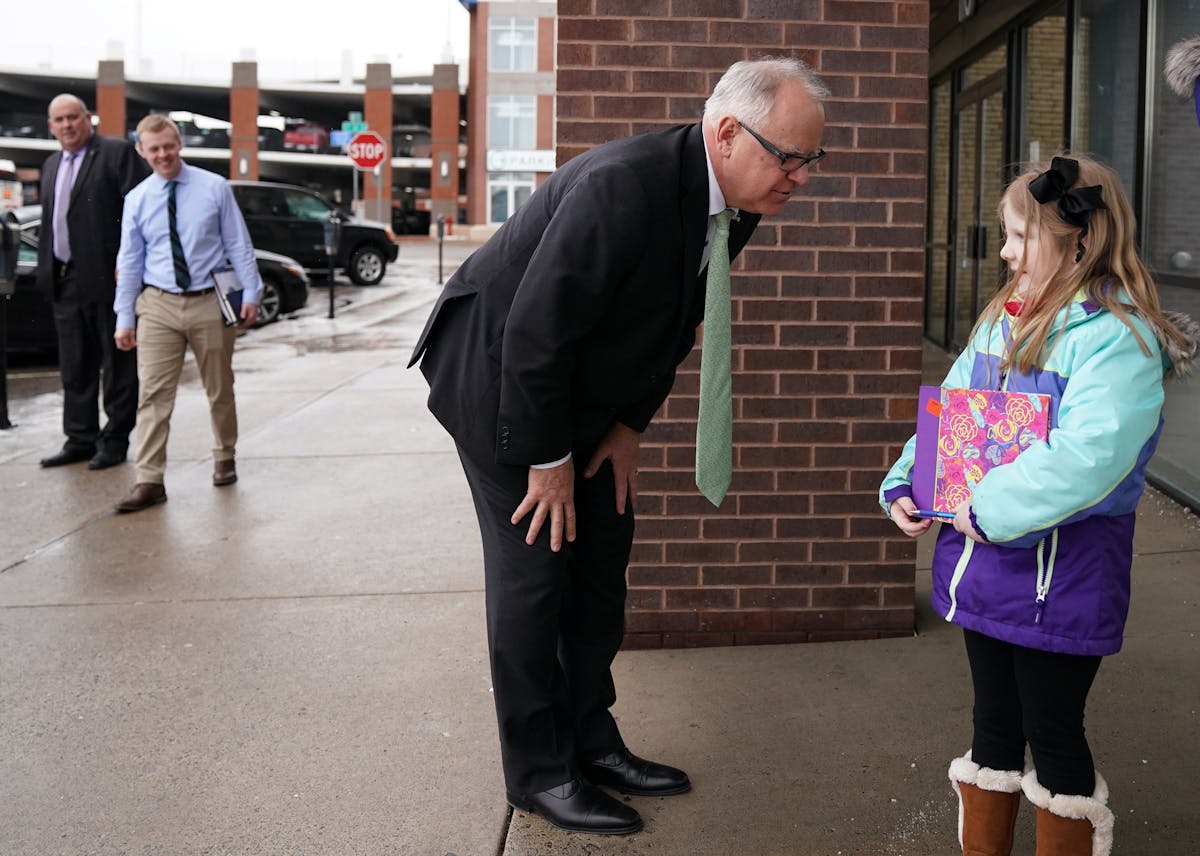Gov. Tim Walz scaled back some of his plans to expand state government programs in a revised budget he released Friday, while at the same time proposing increased taxes on corporations.
The Democratic governor announced changes to his two-year spending proposal after the state's latest economic forecast showed he has less of a surplus to work with. His overall budget plan shrunk by about $120 million, to less than $49.4 billion.
"The original budget priorities remain intact," Walz said, vowing to leave programs in place that he said will grow the state's economy, build the workforce and improve Minnesotan's quality of life.
The governor said he only trimmed new spending proposals, not existing programs. He lowered school safety money by $9 million, cut $11 million for a college tuition assistance program and reduced support for the Metropolitan Council's rail transit services by $8.8 million. The reductions are spread across state agencies. One of the few areas he left intact was housing, citing recent data showing increased homelessness in Minnesota.
A key piece of his revised plan would shift $142 million from the health care reinsurance program to the general fund, making the money available for broader use. The money had been set aside to help keep Minnesotans' health care costs down by giving insurers money to offset costs.
Republicans lawmakers are pushing to continue the reinsurance program, saying premiums would spike without it. Walz said reinsurance was a "tourniquet on the individual market" and that it's time for a new approach. He suggests a 20 percent premium subsidy that he said is more targeted and allows the state to leverage $90 million in federal money that is lost under reinsurance.
The new Walz budget raises $65 million more in revenue through tax hikes for corporations and businesses, prompting concerns from business groups.
"The vast majority of his tax increases fall on the private-sector job-creators," said Minnesota Chamber President Doug Loon. "He proposes another $65 million tax increase on business taxpayers on top of the $981 million already recommended. In the end, consumers and employees will pay the price."
The governor was forced to take a red pen to his original budget after a new revenue forecast in February, when state budget officials said the projected surplus dropped from more than $1.5 billion to $1 billion. However, the slowdown in economic growth and dip in revenue was widely expected, and Walz left a $789 million cushion in his initial budget, giving himself some room for revisions. His new budget leaves $562 million on the bottom line.
In addition to the cuts and tax increases, Walz's plan includes $37 million in new spending. He boosted funding for the University of Minnesota and Minnesota State systems and the American Indian Child Welfare Initiative. He also added $2.1 million to strengthen oversight of the Child Care Assistance Program after fraud was detected in that program.
The budget revisions come as he has been traveling the state talking with residents about education, healthcare and transportation, gathering feedback on his original budget. He said college students and leaders at the higher education institutions convinced him to put more toward their schools.
The budget provides the starting point for negotiations with the Legislature. House Democrats will lay out their spending targets Monday, and Senate Republicans plan to unveil their proposals Friday.
Republican legislative leaders repeated concerns with pieces of Walz's budget on Friday. They have opposed Walz's plans to increase the gas tax by 20 cents and extend a tax on health care providers.
"The effort today is appreciated, but Gov. Walz's budget still spends more than we can afford," said Senate Finance Chair Julie Rosen, R-Vernon Center. "His dependence on taxing sick people and raising the gas tax is not a sustainable solution. We have a $1 billion surplus, we don't need another $3.5 billion in new taxes and fees."
Jessie Van Berkel • 651-925-5044
